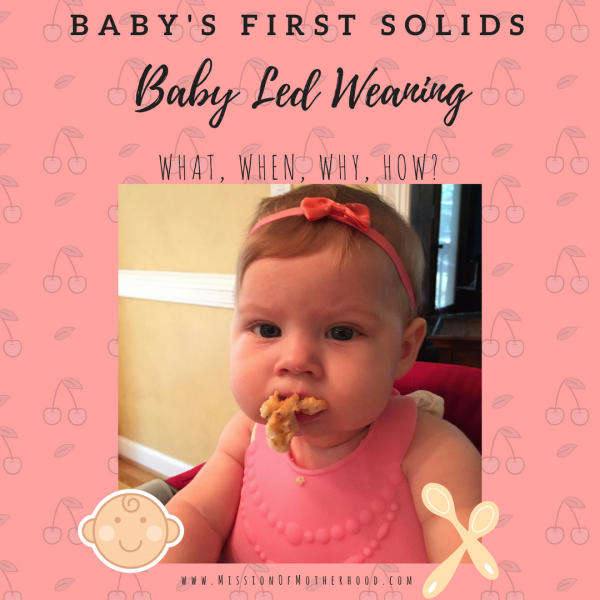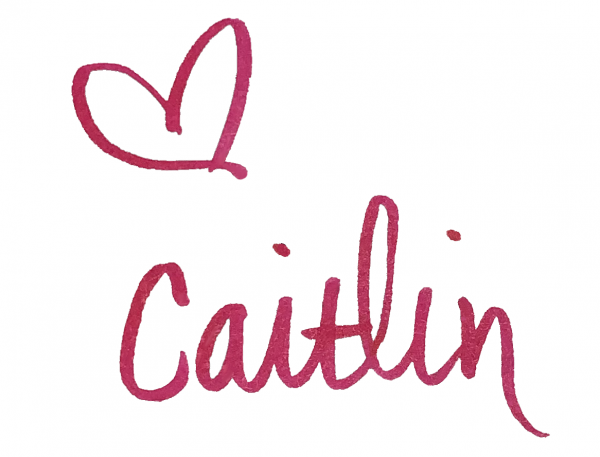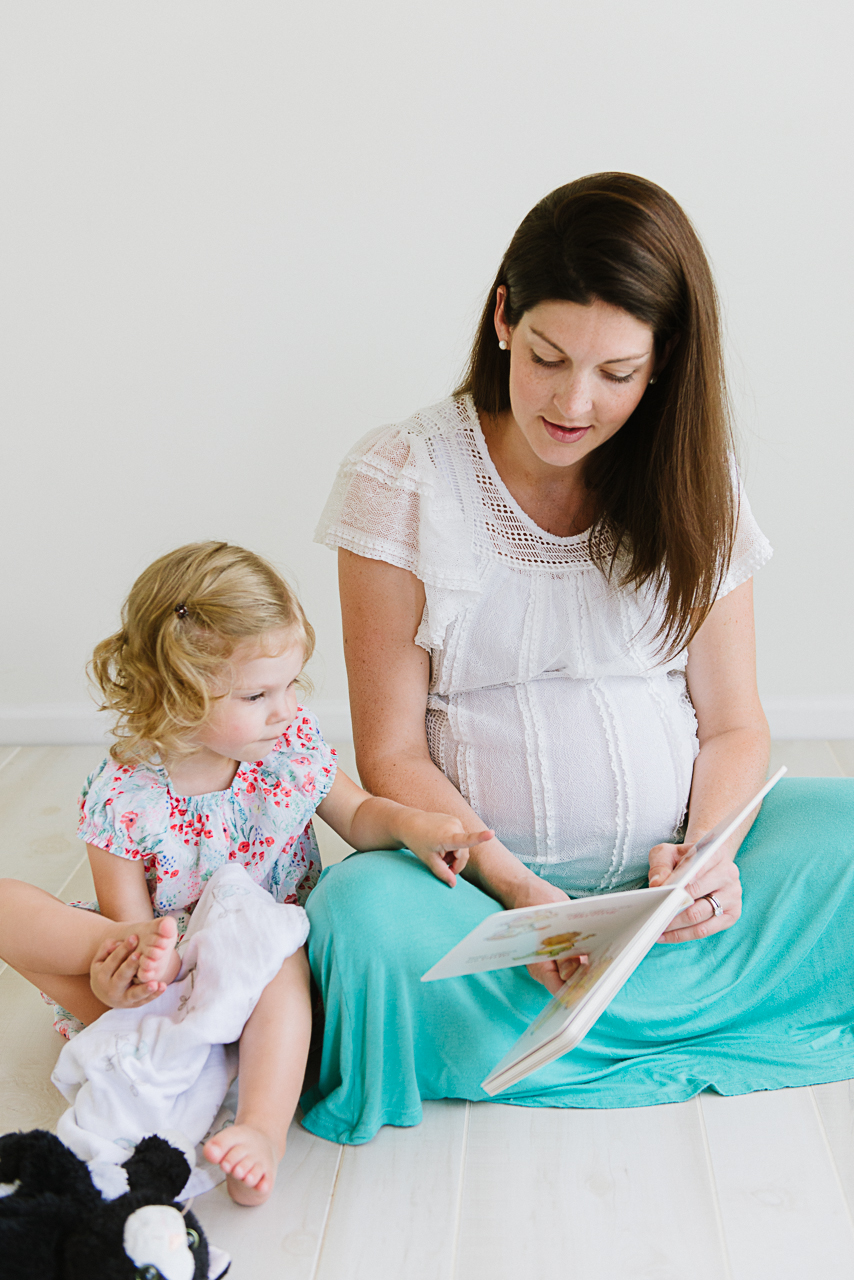This post contains affiliate links. You can view my disclosures policy here.
When is a good time to introduce your baby to solid foods? While the AAP recommends a breastmilk diet for the first 6 months, I always wait for signs of developmental readiness before introducing any solids or purees. Now that our second child is over 4 months and can sit up in the high chair (or in our laps assisted!), we have begun getting the “when are you gonna feed her solids” question. Read on for the whats, whens, whys, and hows that worked for us.

WHEN
Here is a link from the American Academy of Pediatrics on when to introduce your baby to solids. The important things to note, for your baby’s safety, are his/her signs of developmental readiness:
- Sitting up well
- Good head control
- Tongue thrust reflex gone and ability to move food from spoon into mouth (this often does not develop until much closer to 6 months, and sometimes after)
- Ability to bring hands to mouth
- Grasp grip (can hold things with full hand or fist — the pincer grip for most babies does not develop until after 8 months, often closer to 9-10)
- Babies do not need teeth to start solids
- Obviously every baby will hit their developmental milestones at different times, so resist the urge to compare and just focus on your child’s milestones
Don’t rush it! Babies are only babies for a VERY short window of time. They have their ENTIRE lives to be eating solid foods, so there is truly no rush. Starting too early can pose a variety of risks because mechanically they are not ready. Their guts can be immature, and feeding a baby solids when they cannot sit up well or move food with their tongue can present a choking hazard.
I learned with my first that once she was no longer on an exclusive breastmilk diet that it was much harder for trips, car rides, and excursions because I actually had to remember to bring food for her or order food for her! When she was exclusively breastfed, I had what she needed and didn’t have to pack or make anything extra!
WHY
There are many ways to first introduce solids to your baby. Many, especially when starting before 6 months (I don’t recommend this, and neither does the AAP anymore) start with a little bit of rice cereal thinned with milk. I found there to be very little nutritional value to that, and since we were waiting til 6 months, I wanted a more “easy” approach. So, we skipped baby cereal altogether and went with straight finger-sized table foods. This method, called baby led weaning, has been around forever but has grown in popularity since the AAP changed their solid food recommendation to 6 months. More here.
I read Baby Led Weaning when our oldest was about 5-6 months old. When she was first born, I wanted to make my own baby purees for her, but I quickly realized that would require time and effort that I simply didn’t have with a high-needs child who didn’t yet sleep through the night. Reading up on Baby Led Weaning (and a Child/Infant CPR & Choking Class, offered by the local hospital) gave me the confidence to skip the purees and go right to solids. After all, purees were designed for the 4-6 month range, with solids coming after at 6+ months. Since she was exclusively breastfed until 6 months, we jumped right in with solids.
If you’re not sure if this method is for you, I encourage you to read more here and here. I also HIGHLY recommend the book. It’s an easy read and has lots of good information. Some moms opt for a combination of spoon feeding purees and finger foods. Both are messy, but you’ll find what works for you. We had a lot of fun with the finger food style of baby feeding with our first, and plan to take this same approach with our second.
HOW
One of the things we’ll be doing with Nora now that she can sit for short periods of time in the highchair at the table with us, is to give her a spoon, cup, and/or plate to touch and play with. She watches us and her big sister use the utensils and she’s practicing bringing them to her mouth. She’s learning how to move things from one hand to the next and she’s working on her grasp/fist grip, so soft plastic baby spoons are the perfect size for her to practice with. It’s just an empty spoon, but the colors and textures are still a good learning experience for her. Plus, if we do put food on them later, she won’t be afraid or think “what is this weird thing coming at my face and why are they trying to shove it into my mouth?!”
Some people who start with solids via the finger foods/BLW approach opt for starting with avocados or sweet potatoes because they’re the most mild. Based on our family history (lack of severe food allergies other than my own Celiac/gluten sensitivity, and a mild milk protein allergy which she outgrew) and what we read in the books and online, we felt there was no need for this. Claire’s first solid meal at 6 months old was quesadilla chicken! We cut strips of grilled chicken into lengths about the size of our finger and put them on a plate in front of her with some cooked corn, and she grabbed a fistful. She made a hot mess of herself and our kitchen, and we have no idea how much she actually ate, but it didn’t matter.
That’s the beauty of baby led weaning: it’s gradual, and goes at the child’s pace. I always nursed first, and then sat her down with us for meals. If she ate, great, if not, it was an opportunity for her to experience tastes, textures, and work on a variety of fine/gross motor skills. It was also an opportunity for me to get consistent with using sign language so she could communicate. We started with “more,” and “all done,” but it quickly led to more. We taught her the signs for various foods and drinks.
WHAT
We offered Claire whatever we were having for meals with a few exceptions (honey is not recommended before 12 months, no nuts [due to the shape and choking hazard], and we sliced grapes/cherry tomatoes/hotdogs or anything round lengthwise to reduce the risk of blocking her windpipe and choking).
I also began offering breastmilk or water in a cup with meals. I didn’t offer more than an ounce of water at a time until she was closer to 9 months (I didn’t want her filling up on water when for babies of this age, milk is still their primary source of hydration AND nutrition), but again, I didn’t force it. I also discovered the Munchkin weighted straw cup around this time, which was great for water (milk siphoned out of it, which was annoying but manageable, but I hear recently they’ve fixed this issue), and it let her drink from it whether she picked up and tipped the cup or kept it down on the table.
Because of a dairy protein intolerance and the fact that I was still nursing Claire well into toddlerhood, I did not give her cow’s milk for meals. At 2 1/2, I still offer her almond milk or water with meals, but most often she chooses water. Nutritionally, she gets all her calories and vitamins from a balanced diet, so she doesn’t need the cow’s milk. Our second has sensitivities to milk protein and egg, so we are dairy and egg free (and I’m still gluten free) for the foreseeable future. This isn’t the norm for everyone though (and it wasn’t until I did an elimination diet with her that I figured out her sensitivities. More on our nursing journey here).
Some of the other products we loved that made baby led weaning more fun for us, especially in the first 3-6 months of feeding our baby solids:
- Inglesina High Chair with Tray — great for travel, took up a very small footprint in our kitchen, easy to clean under and around without moving. Once she was sitting up better and was more capable (and taller!) we used this for travel because it deflated and folded flat. I loved the Inglesina chair because she was right at table level with us, not off to the side in an infant high chair. It made dining as a family more enjoyable!
- Silicone placemat — there are a BUNCH of these out there, with super cute colors and patterns. They’re amazing, get more than one!
- Silicone bibs — ditto, more than one!
- If you don’t have a dog, I recommend a Vinyl Table cloth as floor mat — you can also use newspaper. Something easy to fold and dump! Protip: especially useful when feeding babies whole grain rice, because that mess gets everywhere and you can’t vacuum it up til it’s dry!
How about you? What method of introducing solids did you choose, and why? Did you do it differently with your first or second child? What made you decide when to start, and why?
UPDATE: You can view an entire list of baby-related feeding items that I’ve either used and loved over the last 3 1/2 + years or that have been recommended to me highly by others. My “Feed That Baby” Amazon Idea List is now available here: http://a.co/aqZoBcD.


